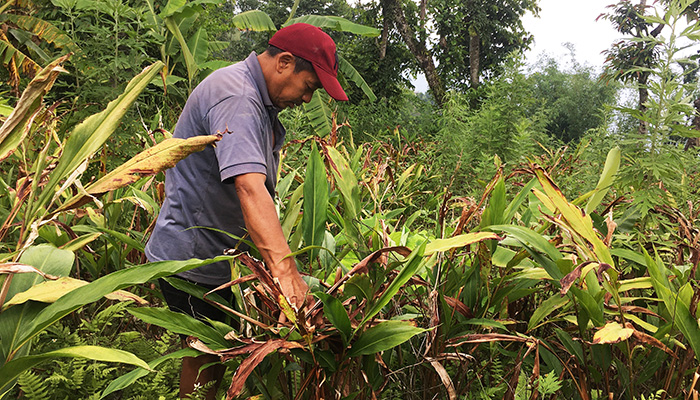Chimi Dema | Tsirang
Owing to bountiful harvest and market prospects of cardamom in the past years, Yam Bdr Mongar planted saplings in more than an acre about two years ago.
They have started bearing capsules already, and in two months now he could reap his first harvest.
However, this could never be.
Today, his cardamom orchard surrounding the two-storey traditional house in Mendrelgang wears yellowish-brown hues mixed with a green tint. Many plants are affected, forming yellowish- brown to reddish-brown patches. Leaves have dried up.
What has affected the crop remains unknown to many farmers in the community. They claim that it has become a common cause of declining yield. Farmers say that the leaves dry after the roots rot.
According to the gewog agriculture official, the cardamom plants suffer from the attack of microbial agents like fungi due to microclimatic conditions prevailing in the cardamom ecosystem.
The agriculture extension officer said that no one has informed him about the infection so far.
“If reported, technical advisories on plant management practices and other remedies to resist the disease could be provided,” he said.
The official said that a similar infection was reported in Patshaling gewog in the past.
Other factors including direct exposure to sunlight and lack of humidity and moisture also make plants susceptible to diseases.
Yam Bdr Mongar said that he cultivated the crop with the help of a loan from a rural financing scheme.
He said that he has worked hard, expecting a good yield. “But the disease is wiping out my crop,” he said. “It’s killing me.”
Worried about income from cardamom cultivation, he said that he might need to pay back the loans from what he earns from poultry farm he started with half the amount of the loan.
Another farmer Jas Maya Tamang said that the fungal disease has started infecting the crop since last year.
Given the widespread infection, she said that they have lost hope to save the crop.
“I don’t think any pesticide or method could control the infection,” she said.
The same disease, she said, affected the crops once a long time ago. “It has come again.”
Jas Maya Tamang said that the plants normally give good fruiting from the third year after planting. She has cultivated cardamom on a 0.6-acre land.
Last year, she harvested about 80 kilogrammes from a quarter of the plants and sold for Nu 500 a kg.
“I expected to harvest at least about 300kg this year as all plants have started fruiting now. It is very unlikely,” she said.
Tsholingkhar villagers are also mourning the loss of their orchards to the infection.
Ganga Maya Saru said the income from her small-scale cardamom orchard helped her pay for labour for vegetable farming in the past. “The loss of income from cardamom will hamper my vegetable production.”
Besides declining yield, the fall in prices, farmers say, is also worrying them. The market price today fluctuates between Nu 400 and Nu 500 a kg.
Farmers said that cardamom cultivation requires more manual labour than other farming work.
Cardamom is one of the main cash crops for farmers of the dzongkhag besides mandarin.
Going by the RNR Census Report 2019, Tsirang, as one of the major cardamom growing dzongkhags, produced about 153 metric tonnes from about 1,815 acres that involved 2775 growers.


